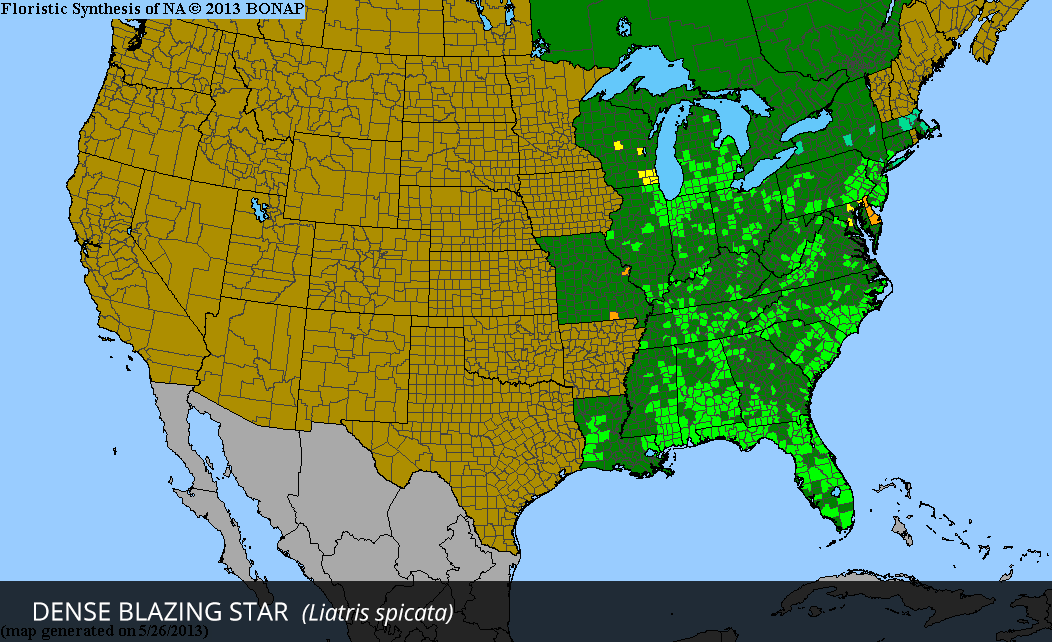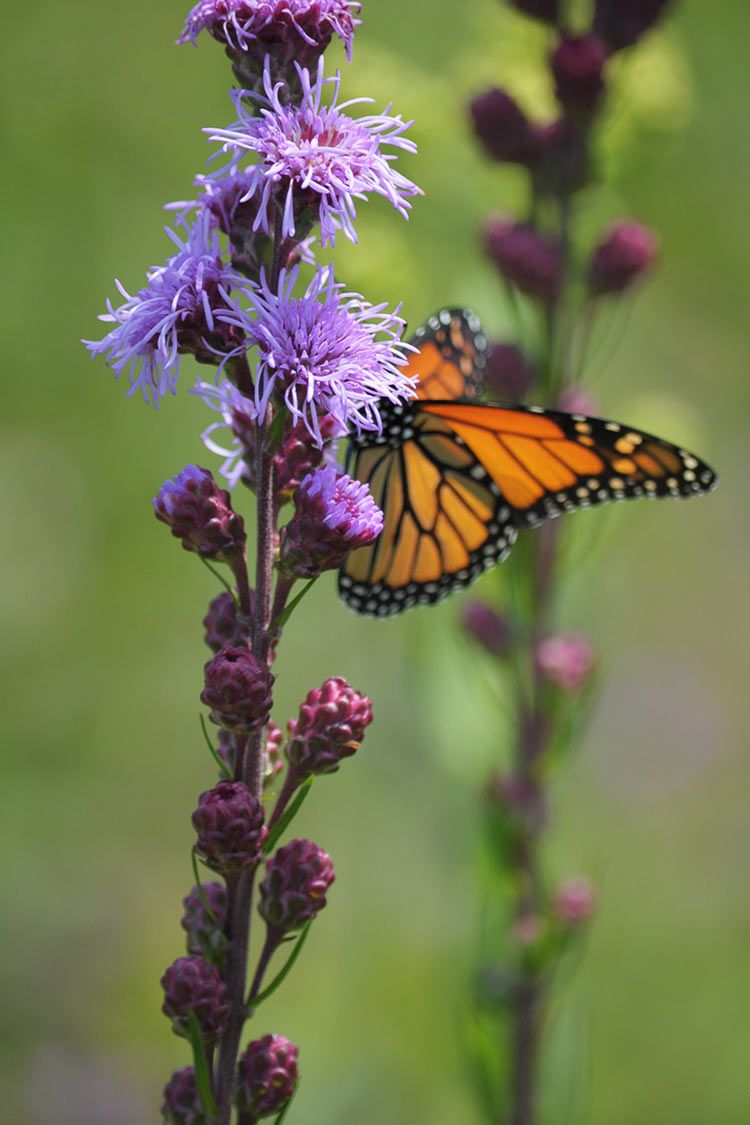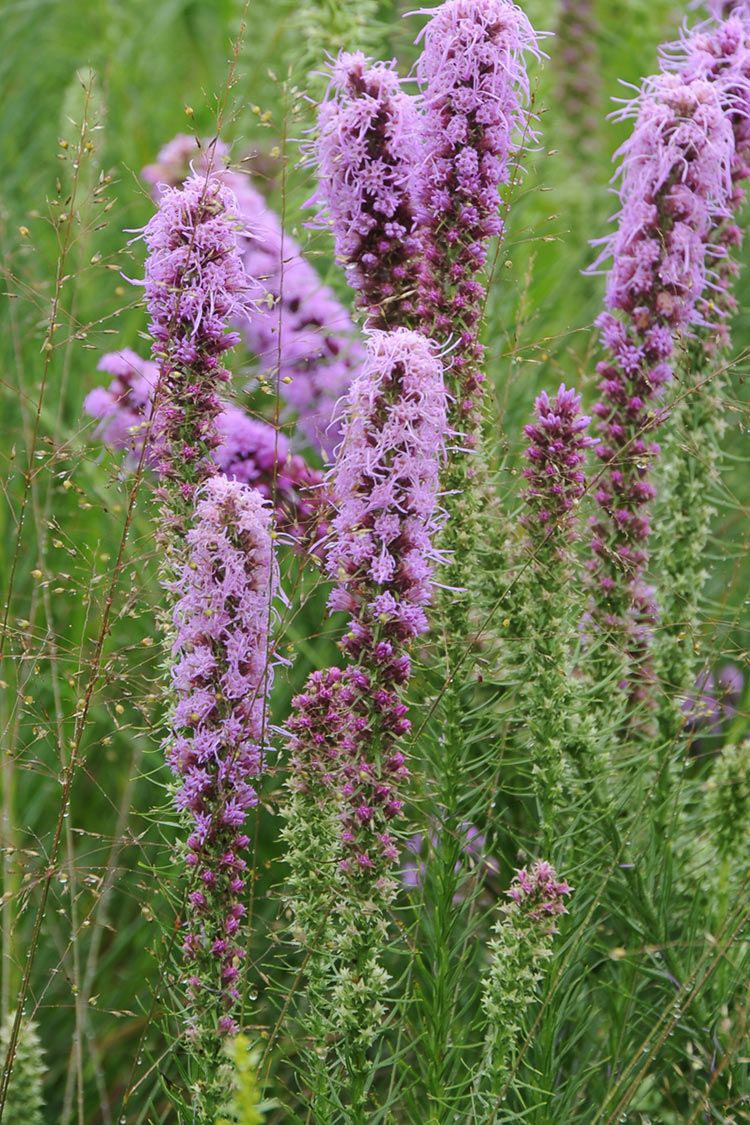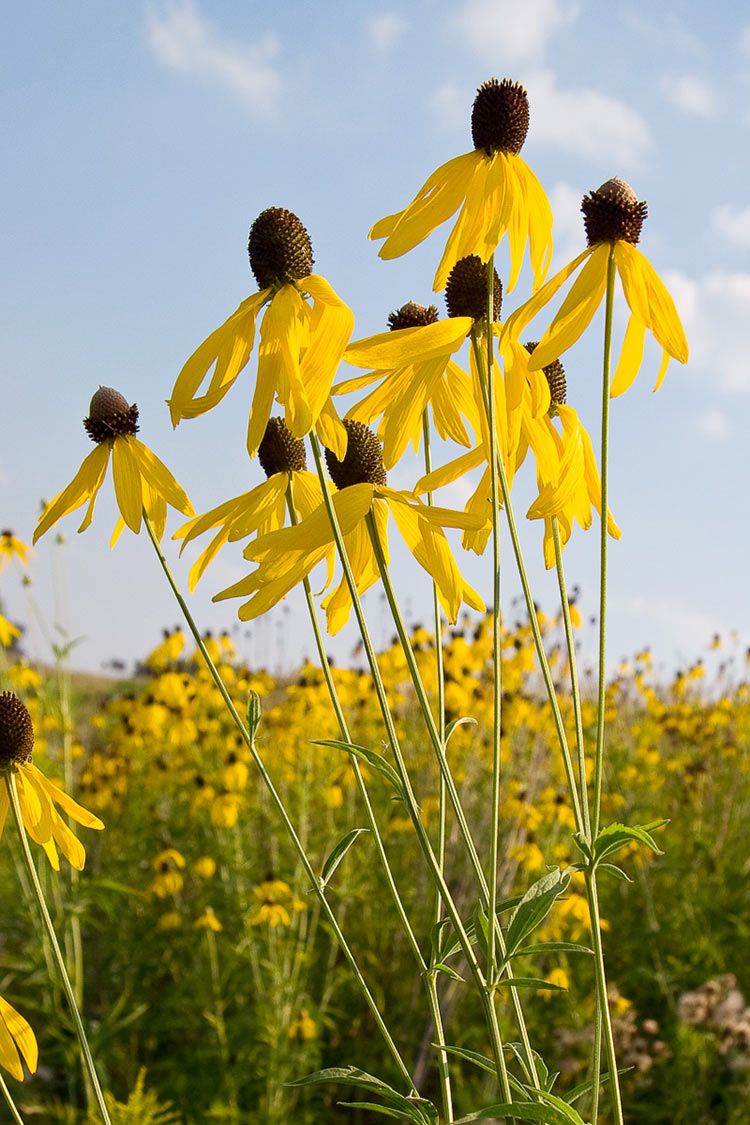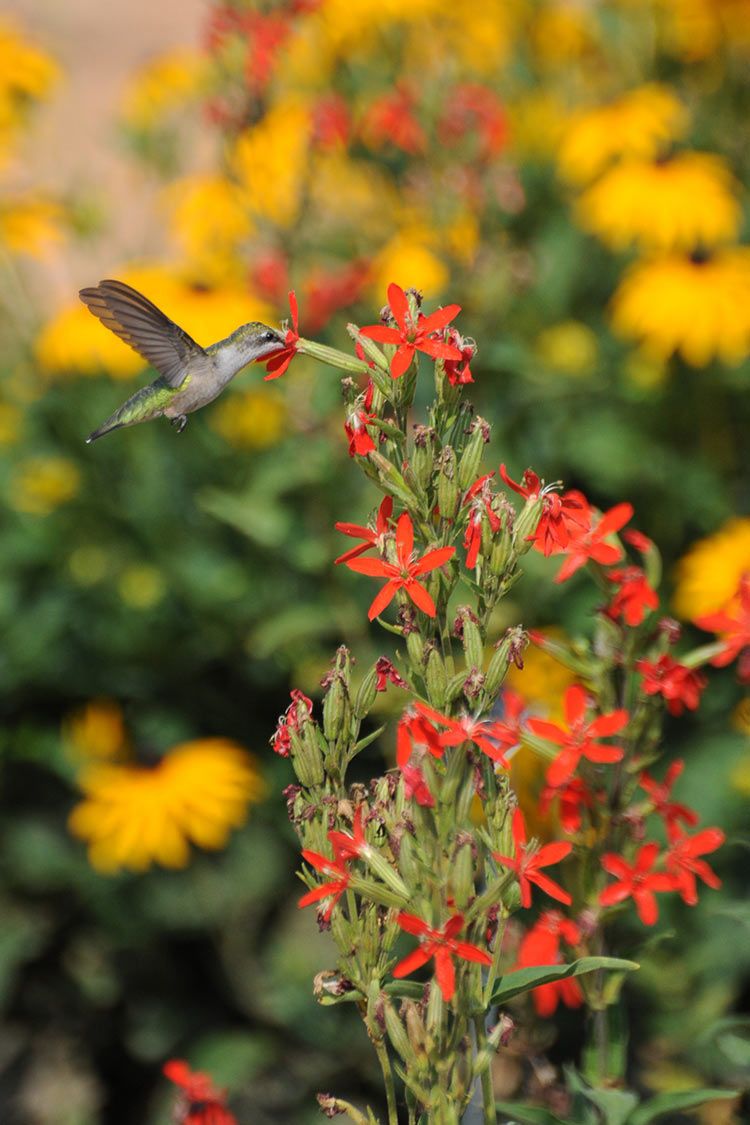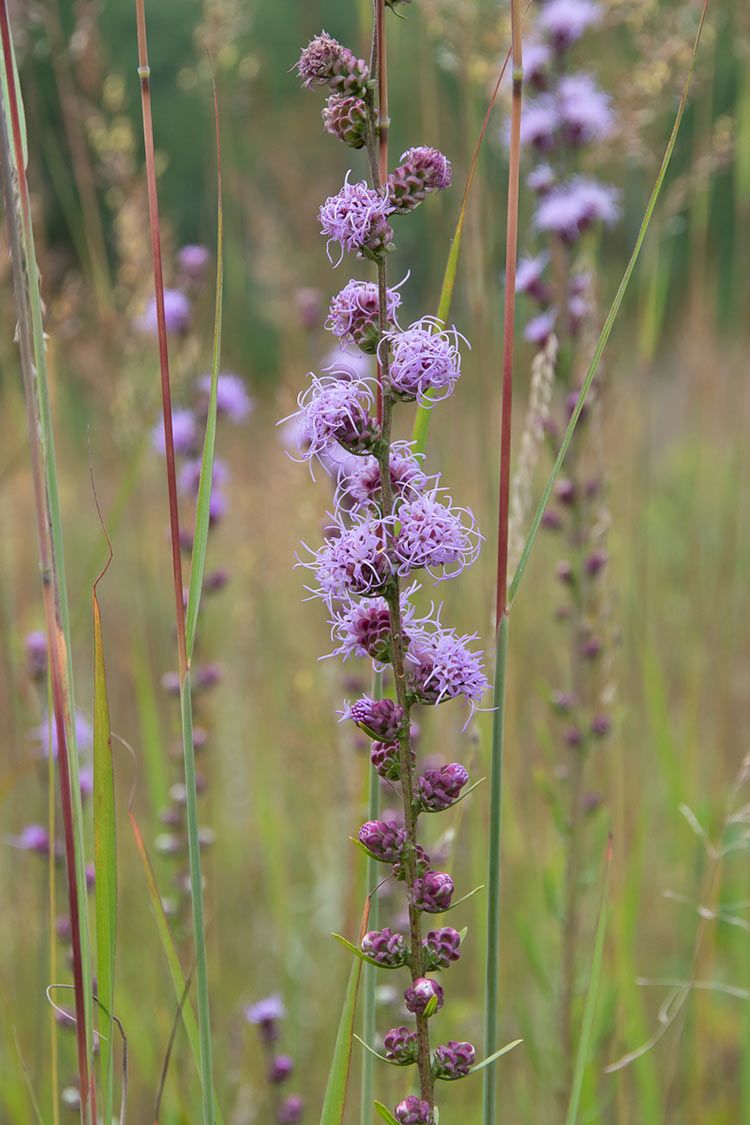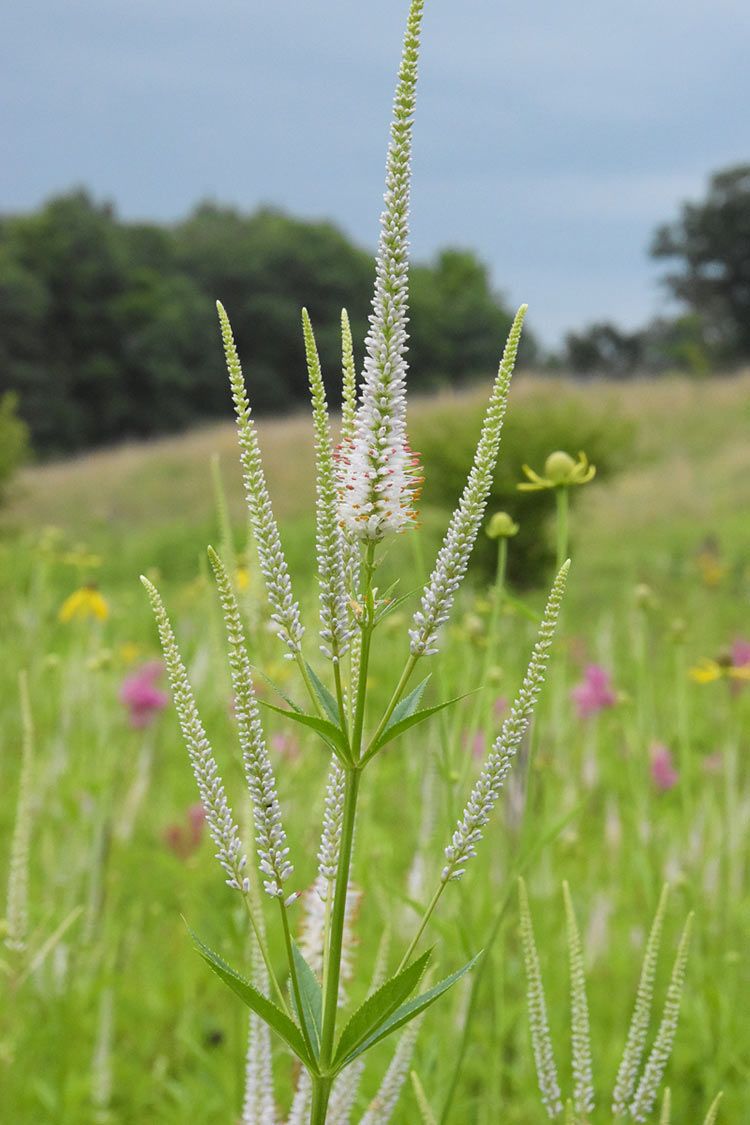Dense Blazing Star
Liatris spicata, or Dense Blazing Star, produces purple flower stalks late in the season after other blazing stars are finished blooming. The tall flowering stalks emerge from delicate tufts of grass-like basal foliage, with leaves becoming sparse as they move up the rigid stems …
| Soil Type | Clay, Loam, Sand |
|---|---|
| Soil Moisture | Medium, Moist |
| Sun Exposure | Full Sun |
| Height | 3' - 5' |
| Bloom Color | Lavender, Pink, Purple |
| Bloom Time | Aug, Sep |
| Spacing | 6" - 1' |
| Zones | 4, 5, 6, 7, 8, 9, 10 |
| Root Type | Corm |
| Benefits | Birds, Butterflies, Pollinators, Hummingbirds, Host Plant |
| Seeds per Oz | 12000 |
| Propagation Treatment | Moist Stratification |
| Days to Moist Stratify | 30 days |
| Direct Sowing Time | Fall |
Liatris spicata, or Dense Blazing Star, produces purple flower stalks late in the season after other blazing stars are finished blooming. The tall flowering stalks emerge from delicate tufts of grass-like basal foliage, with leaves becoming sparse as they move up the rigid stems. Commonly reaching four feet in height, it can grow 5 - 6 feet high in ideal conditions. Highly adaptable and easily grown in medium, well-drained soils, Liatris spicata is native to moist meadows and marsh margins of the Midwest and east. More common in flower gardens than in the wild, it is a standard component of butterfly gardens, water feature margins, rain gardens, and naturalized moist prairies.
Very similar in appearance to Liatris pycnostachya, Liatris spicata has even more flowers per head with smooth-pressed floral bracts, while the floral bracts of L. pycnostachya are clearly curved outward, or recurved.
Butterflies, bees and hummingbirds all visit Dense Blazing Star, and birds feed on the seeds in fall. Plants in the Liatris genus are known to host numerous small moths, such as the Glorious Flower moth (Schinia gloriosa), Three lined Flower moth (Schinia trifascia), Wavy-Lined Emerald (Synchlora aerata), and the Blazing Star Borer moth (Carmenta anthracipennis).




